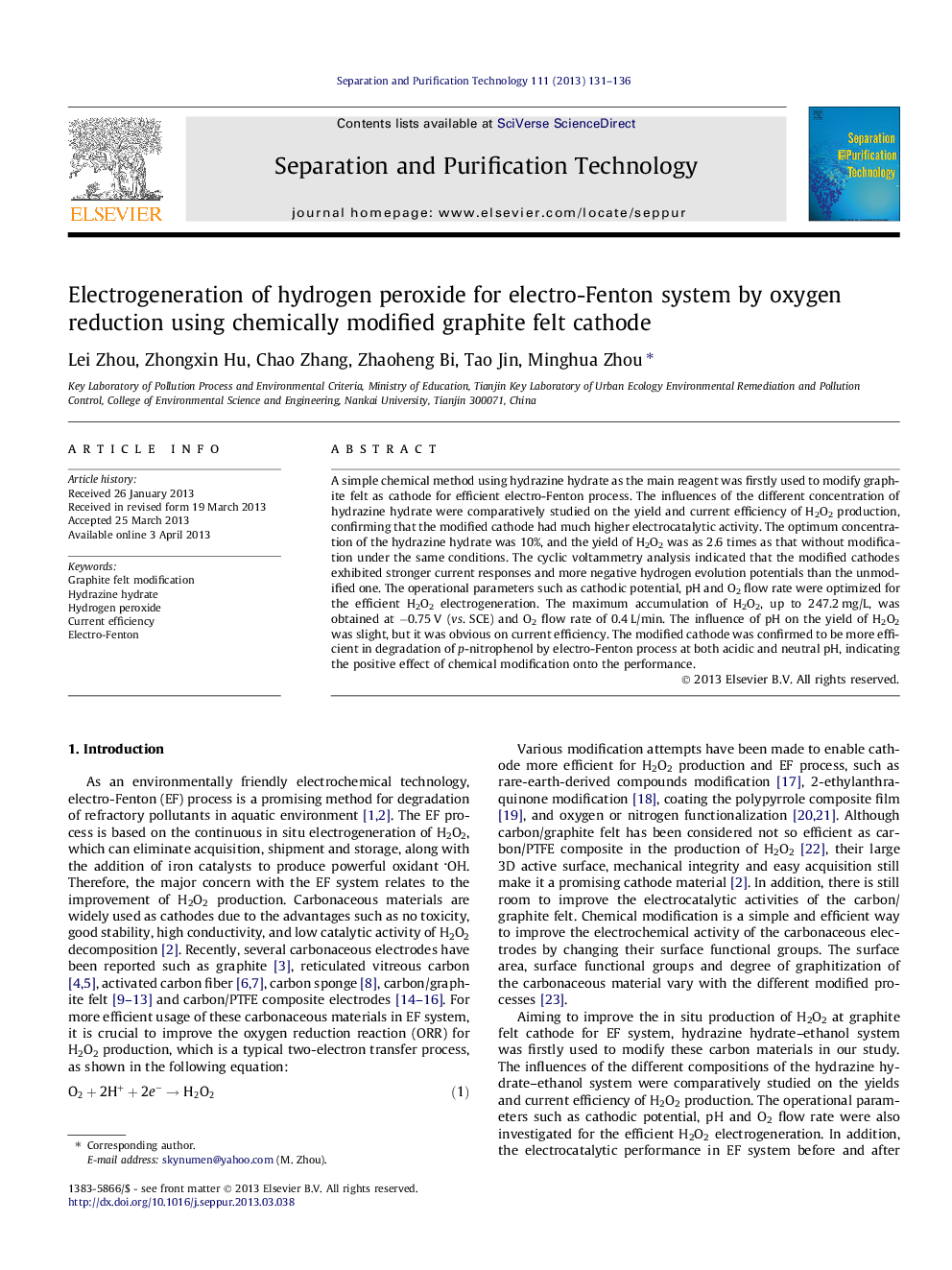| Article ID | Journal | Published Year | Pages | File Type |
|---|---|---|---|---|
| 641613 | Separation and Purification Technology | 2013 | 6 Pages |
•Hydrazine hydrate was firstly used to modify graphite felt for H2O2 production.•The modified cathodes exhibited higher activities for oxygen reduction.•The optimum concentration of hydrazine hydrate for chemical modification was 10%.•The effect of cathodic potential, pH and O2 flow rate were investigated.•The modified cathode had better performance in p-Np degradation by electro-Fenton.
A simple chemical method using hydrazine hydrate as the main reagent was firstly used to modify graphite felt as cathode for efficient electro-Fenton process. The influences of the different concentration of hydrazine hydrate were comparatively studied on the yield and current efficiency of H2O2 production, confirming that the modified cathode had much higher electrocatalytic activity. The optimum concentration of the hydrazine hydrate was 10%, and the yield of H2O2 was as 2.6 times as that without modification under the same conditions. The cyclic voltammetry analysis indicated that the modified cathodes exhibited stronger current responses and more negative hydrogen evolution potentials than the unmodified one. The operational parameters such as cathodic potential, pH and O2 flow rate were optimized for the efficient H2O2 electrogeneration. The maximum accumulation of H2O2, up to 247.2 mg/L, was obtained at −0.75 V (vs. SCE) and O2 flow rate of 0.4 L/min. The influence of pH on the yield of H2O2 was slight, but it was obvious on current efficiency. The modified cathode was confirmed to be more efficient in degradation of p-nitrophenol by electro-Fenton process at both acidic and neutral pH, indicating the positive effect of chemical modification onto the performance.
